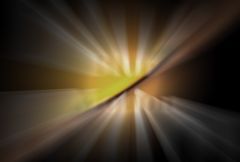S_BlurMotion
Performs a motion blur of the source clip between the specified From and To transformations. This can be used to perform radial zoom blurs, rotate blurs, directional blurs, or any combination of these. The From and To parameters do not refer to time. They describe the two transformations in space that determine the style of blur applied to each frame.In the Sapphire Blur+Sharpen effects submenu.
Inputs:
-
Source: The current layer. The clip to be processed.
- Matte: Defaults to None. If provided, the amount of motion blur is scaled by this input for each destination pixel. This input can be affected using the Blur Matte, Invert Matte, or Matte Use parameters.

|